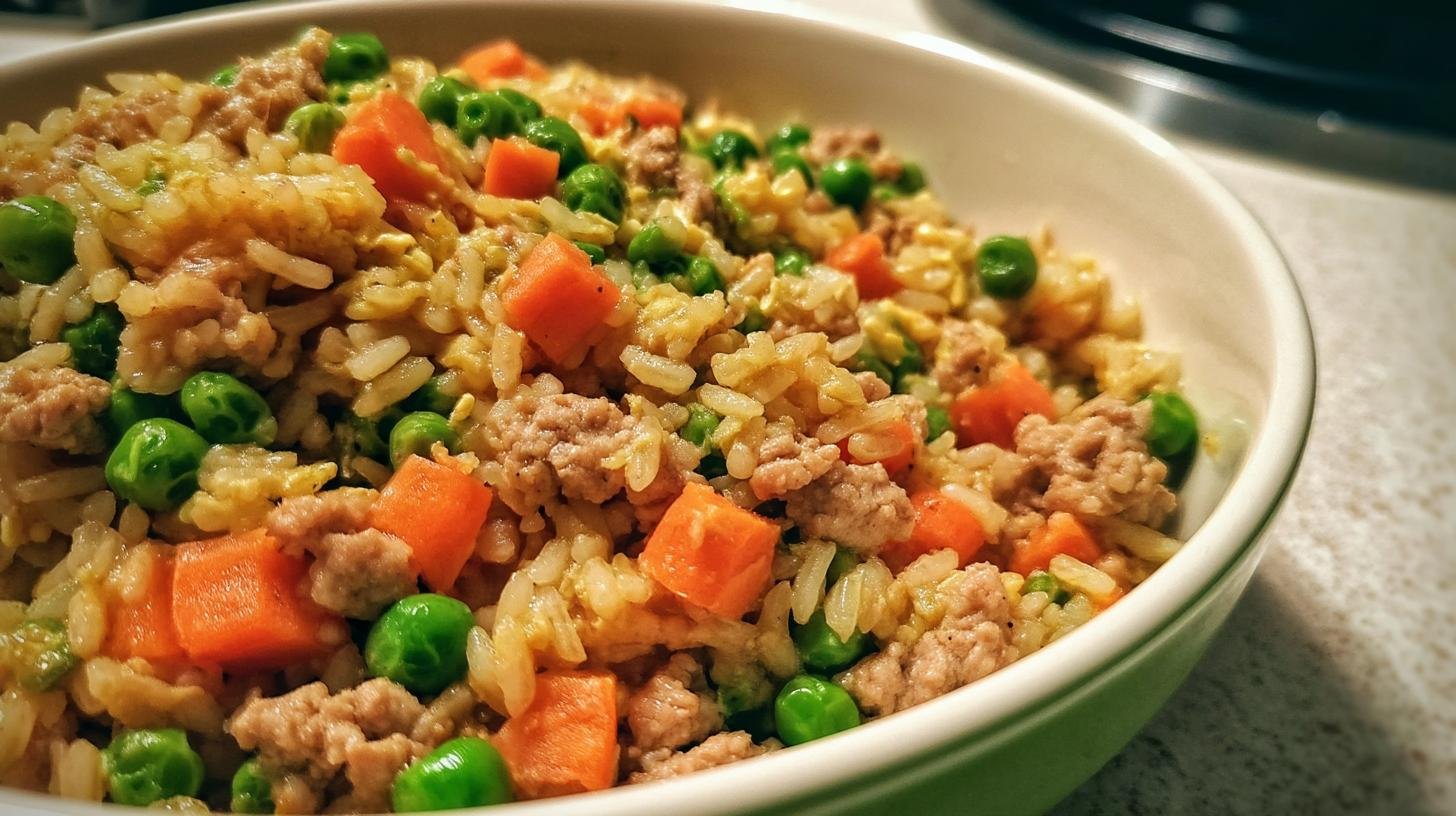Let me tell you about the day my golden retriever pup, Biscuit, turned his nose up at store-bought kibble for the third time that week. There I was, covered in carrot peels and desperation, when my vet said the magic words: “Why not try making his meals?” That’s how our journey with nutritious puppy meals began – and friends, it changed everything.
I quickly learned growing pups need more than just calories. They thrive on balanced meals with lean proteins, digestible carbs, and veggies packed with nutrients. After weeks of recipe testing (and Biscuit’s very enthusiastic taste-testing), we landed on this simple formula that keeps his tail wagging and coat shiny. The secret? Using human-grade ingredients you’d eat yourself, combined in proportions that support muscle growth and bone development.
Now, I’m not a veterinarian – that’s why this recipe got the thumbs-up from ours before sharing. It’s perfect for pups aged 3-12 months, but always check with your own vet first (see those notes later!). What I am is a pet parent who’s seen the difference real food makes. Last week, Biscuit outran every dog at the park, then came home and demolished this meal like the little champion he’s becoming.
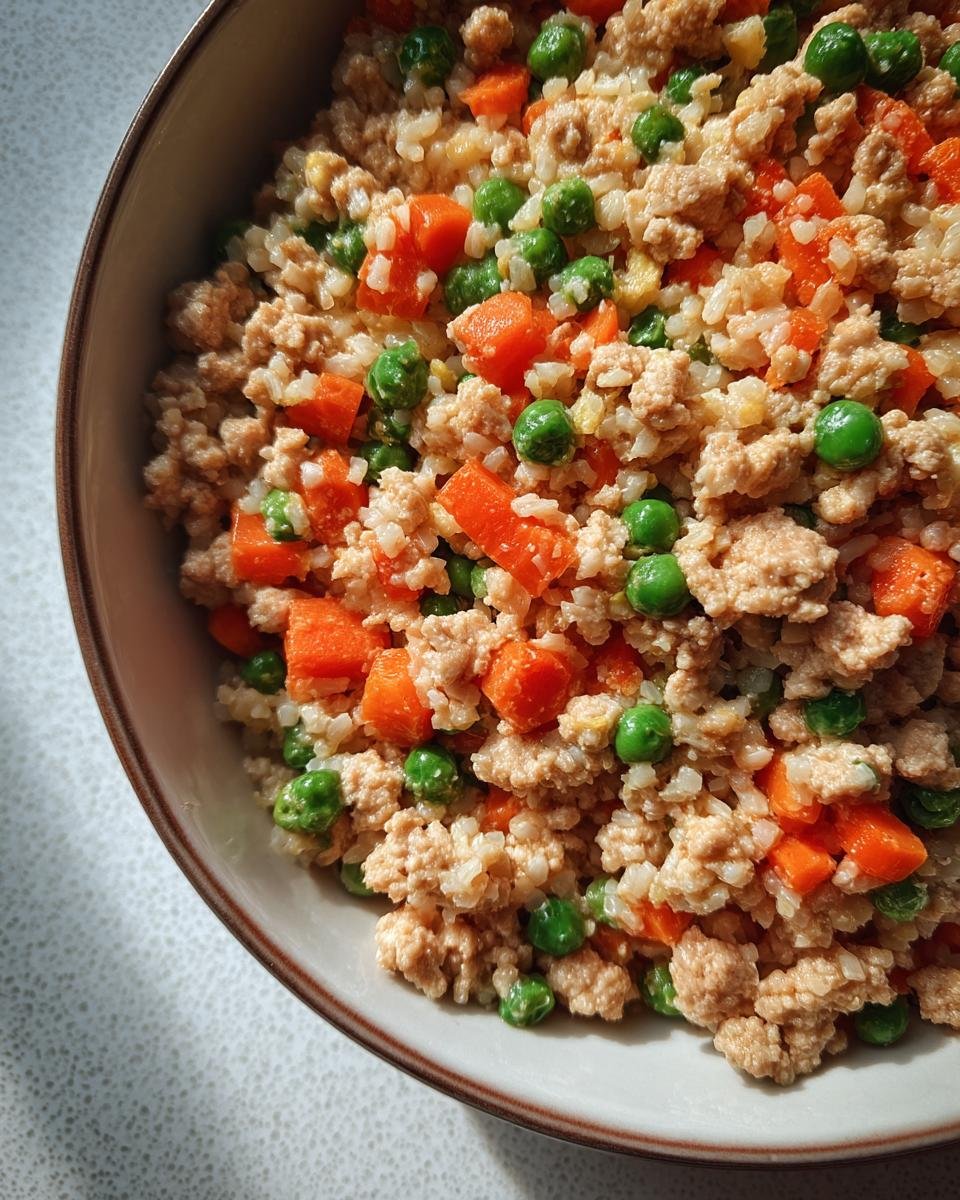
Ingredients for Nutritious Puppy Meals
When I first stared at my pantry trying to make Biscuit’s meals, I realized simple is best. These six ingredients became our go-to because they’re packed with what growing pups need – and yes, I’ve taste-tested them myself (don’t judge, the olive oil makes it surprisingly good!).
- 1 cup ground turkey (lean) – Look for 93/7 lean-to-fat ratio to fuel muscles without upsetting tiny tummies
- 1/2 cup brown rice (uncooked) – Creates digestible carbs that stick to their ribs
- 1/4 cup carrots (finely chopped) – Steam these until they squish between your fingers for teething pups
- 1/4 cup peas – Frozen works great! Just thaw and smash for smaller breeds
- 1 tbsp olive oil – Our vet’s secret for shiny coats and happy joints
- 1 tsp calcium carbonate (optional) – Check with your vet first! Crucial for big breed bone development
Pro tip: Those carrot bits? Biscuit thinks they’re edible confetti. I call them vitamin A confetti.
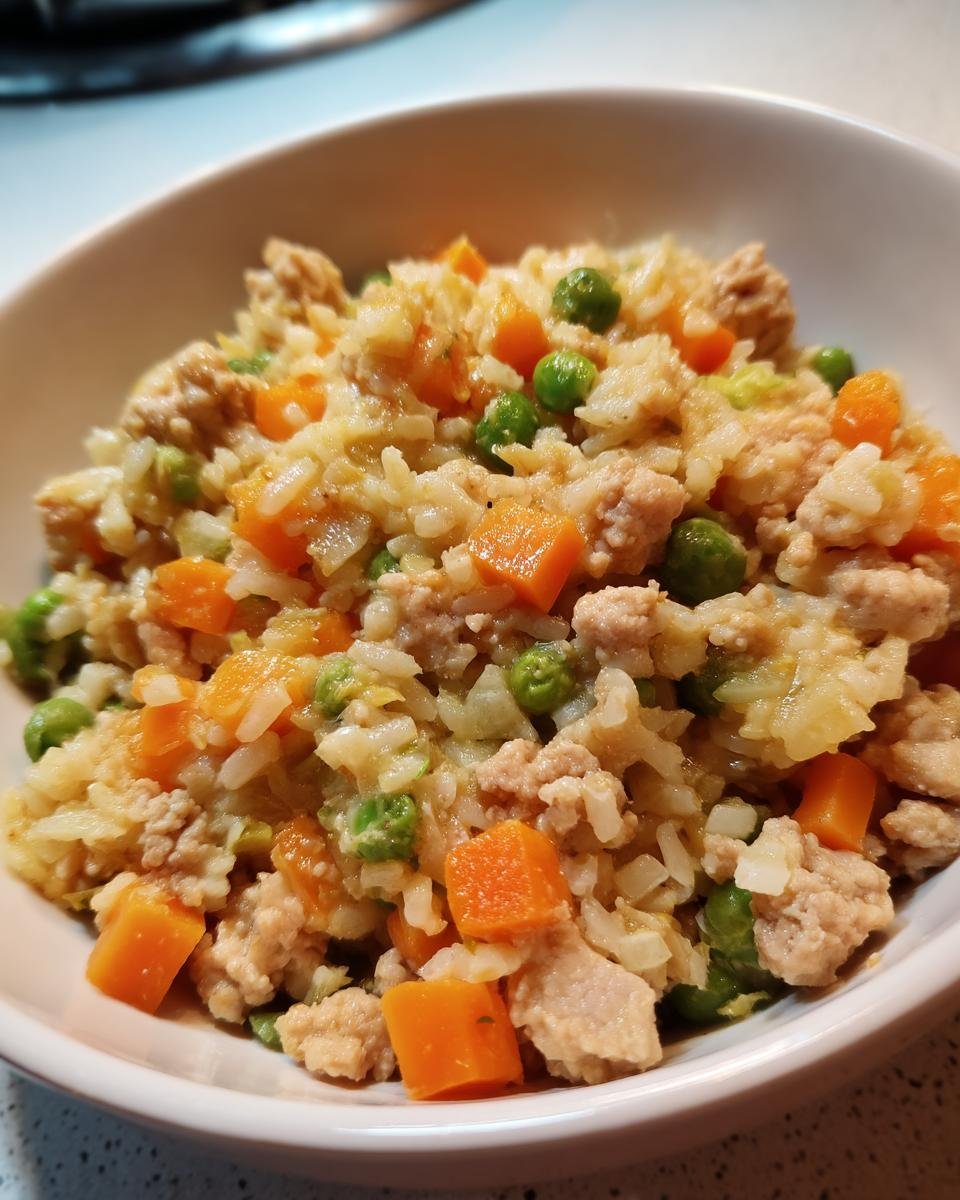
How to Prepare Nutritious Puppy Meals
Let’s get cooking! I’ll never forget the first time I made this – Biscuit circled my feet like a furry tornado, sniffing the air like I’d discovered the secret to eternal puppyhood. Follow these steps carefully, and your pup will do the same happy dance.
Cooking the Protein Base
Here’s where I learned the hard way: puppies need lean protein cooked gently. Grab your trustiest non-stick skillet and set it over medium heat (no higher!). Crumble in the ground turkey like you’re sprinkling snow over a forest floor. Wait for that first sizzle – that’s your cue to stir every 30 seconds with a wooden spoon.
- Cook until no pink remains (about 5-7 minutes)
- Drain fat through a mesh strainer – those puppy tummies can’t handle grease
- Let turkey cool in the strainer while you work on other components
Pro tip: If the turkey sticks, your pan was too hot. Burnt bits = unhappy puppy digestion!
Preparing Puppy-Safe Vegetables
Biscuit once stole a garlic-seasoned green bean – cue emergency vet visit. Lesson learned! Steam veggies plain in a bamboo steamer over simmering water. Carrots take 8 minutes, peas just 3. Test with a fork – they should mash easily but not disintegrate.
- Chop steamed carrots into rice-sized pieces (great for small jaws)
- Lightly crush peas to release nutrients
- Never add salt, butter, or spices – puppy taste buds are sensitive!
Psst… Save the steaming water! Mix a tablespoon into the final meal for extra hydration.
Combining Ingredients Safely
This part requires patience – I know those puppy eyes are begging, but hot food can burn tender mouths! Spread all components in a thin layer on a baking sheet. Let everything cool to room temperature (about 20 minutes).
- Mix in a giant bowl with clean hands – you’ll feel any hidden hot spots
- Portion using a kitchen scale: 1/2 cup per 5lbs of puppy weight
- Store leftovers immediately – puppy food spoils faster than human meals
Watch closely during first feedings! Some pups gobble, others need tiny tastings. Biscuit’s first bite? Let’s just say he licked the bowl clean… then my face.
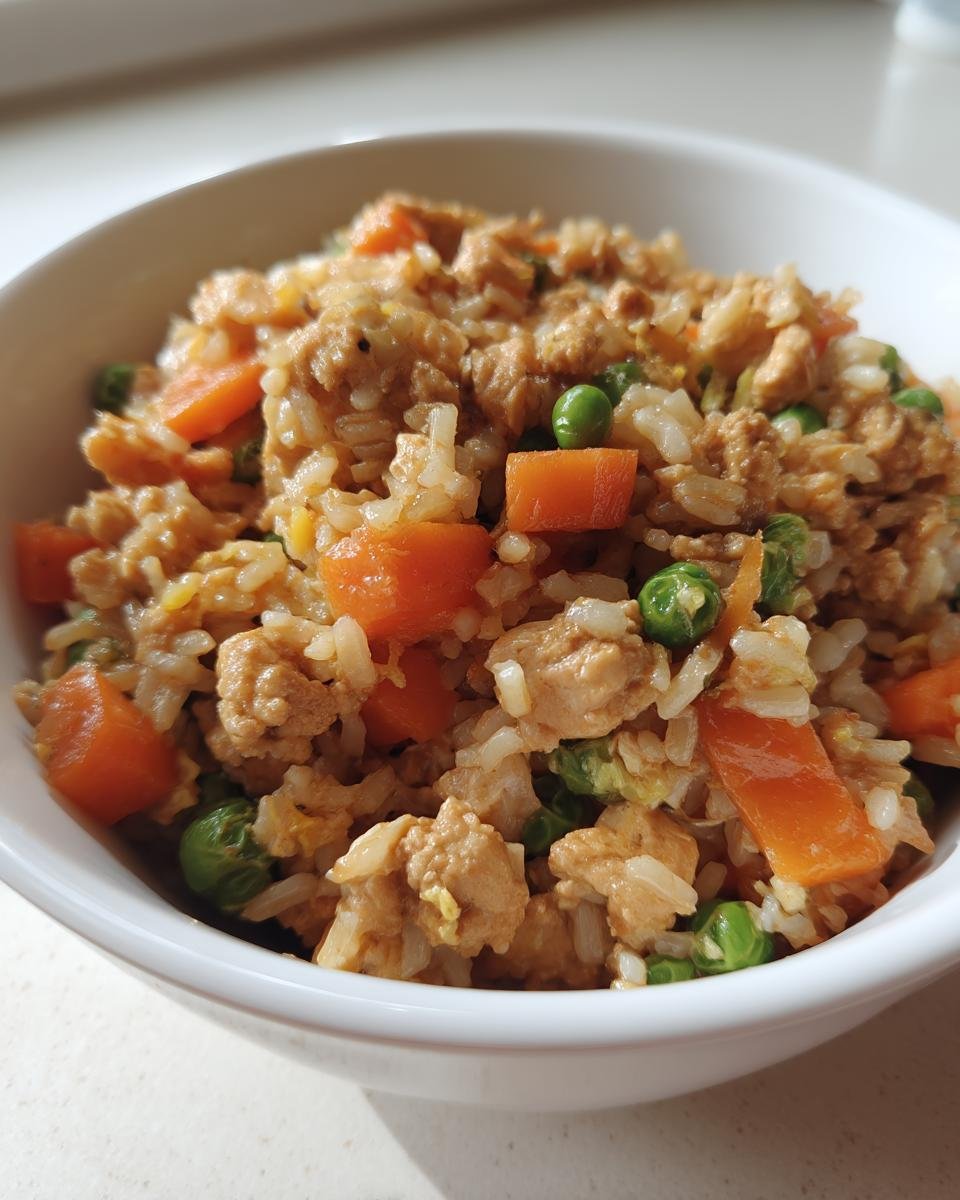
Why You’ll Love This Nutritious Puppy Meal
Let me count the ways! Three weeks into making this recipe, Biscuit dragged his empty bowl across the kitchen floor like a hockey puck – that’s when I knew we’d struck gold. Here’s why you’ll become a convert too:
- Wallet-friendly wins – Costs half what premium kibble does, especially if you batch-cook
- Swap-friendly ingredients – Out of peas? Use green beans. Turkey too pricey? Try chicken thighs
- Muscle-building magic – That lean protein made Biscuit’s legs go from wobbly to zoomies-ready in two weeks flat
The real proof? Last month, Biscuit played fetch for 45 minutes straight without collapsing – a miracle for a pup who used to nap through afternoon walks. Now he’s all springy leaps and wagging mischief, with a coat so shiny neighbors ask if I brush him hourly (I don’t).
Trust me – once you see that post-meal “puppy food coma” face, you’ll never go back to mystery-meal kibble.
Essential Equipment for Nutritious Puppy Meals
When I first started making Biscuit’s meals, my kitchen looked like a gadget graveyard. Now I keep it simple with three trusty tools:
- Non-stick skillet – My war hero against sticky turkey bits. The ceramic-coated one prevents scorching without nasty chemicals.
- Rice cooker/steamer – A $20 lifesaver! Cooks rice perfectly while steaming veggies in the tray above. (Biscuit hears the “done” beep and comes running.)
- Airtight glass containers – Wide-mouth jars let me see portions at a glance. Plastic absorbs smells – trust me, you don’t want yesterday’s salmon lingering.
Pro tip: That fancy stand mixer collecting dust? Leave it. A wooden spoon and mixing bowl work magic here.
Ingredient Substitutions for Puppy Dietary Needs
Remember when Biscuit decided turkey was “so last season” and boycotted his meals for two days? That’s when I learned the art of substitution. The beauty of this recipe is its flexibility – just keep these swaps vet-approved!
- Chicken for turkey – Ground chicken thighs became our go-to when turkey shortages hit. They’re slightly fattier, so I drain extra grease and add an extra tablespoon of rice to balance it out
- Green beans for peas – Perfect for pups with sensitive tummies! Steam them until they’re mushy enough to smash with a fork (Biscuit calls them “crunchy noodles gone soft”)
- Grain-free options – My neighbor’s bulldog thrives on quinoa instead of rice, but always check with your vet first. Sudden grain changes can upset tiny systems
That optional calcium carbonate? Crucial for large breeds like Great Danes – it’s like puppy calcium supplements without the chalky aftertaste. But my vet warned: never add it without professional guidance. Too much can stunt growth!
Pro tip: Avoid onions, garlic, and grapes at all costs. I keep a “no-fly zone” list on my fridge after Biscuit’s Great Green Bean Heist of 2022.
Storing and Reheating Nutritious Puppy Meals
Here’s where I messed up big time – I once left Biscuit’s meal on the counter “just for an hour” and learned about bacterial growth the hard way. Now I’m militant about storage!
- Fridge: Glass containers with snap lids keep meals fresh for 3 days max. I label them with puppy emojis so my roommate doesn’t mistake them for human leftovers (again)
- Freezer: Portion into silicone ice cube trays for single servings. Pop out cubes into freezer bags – they’ll last 2 months! Thaw overnight in the fridge, not on the counter
Never microwave! I learned the hard way when a “warm” bite burned Biscuit’s tongue. Room-temperature meals are safest – if it’s too cold for your wrist, it’s too cold for their belly.
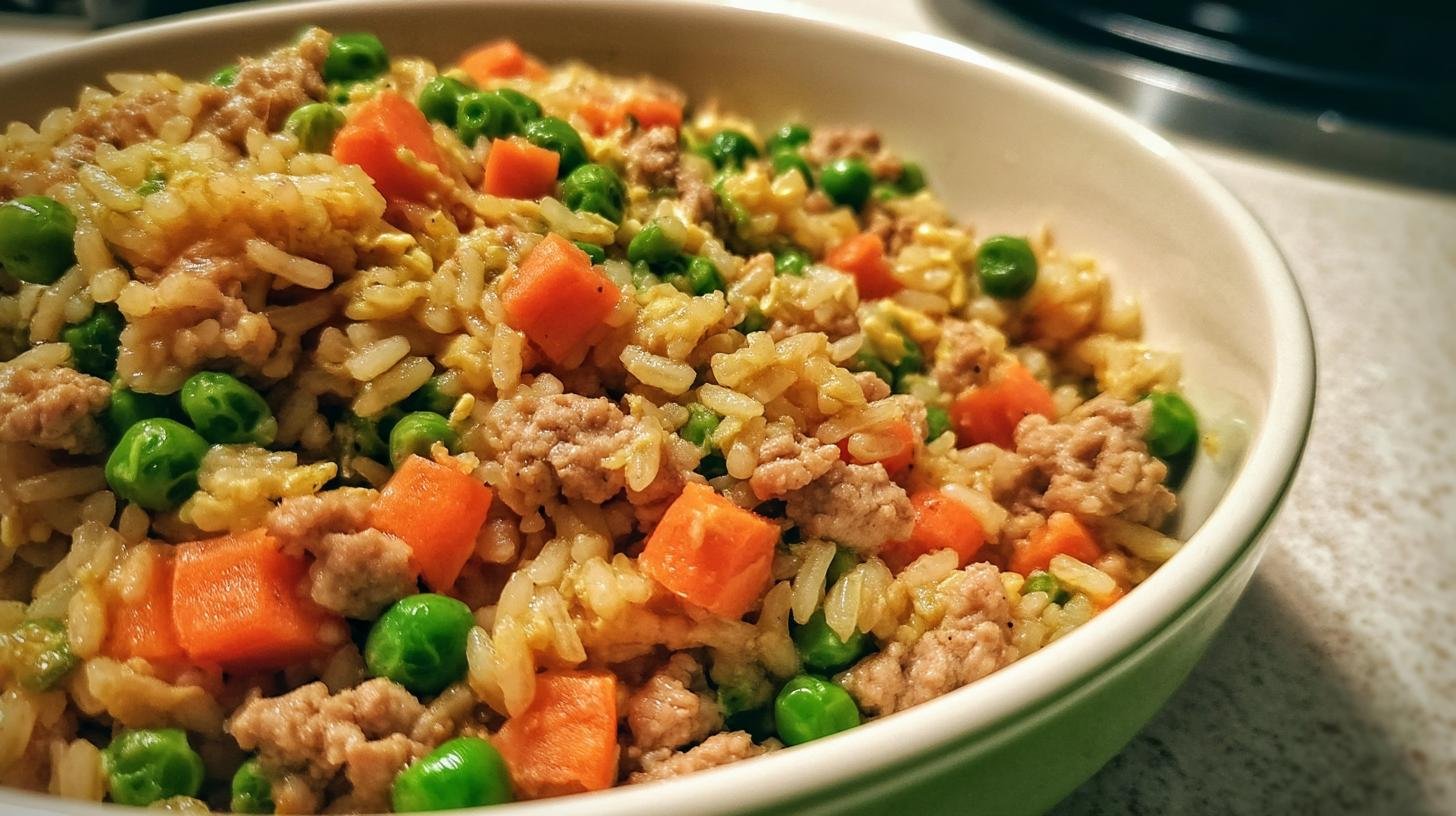
Nutritional Information for Nutritious Puppy Meals
Let’s talk numbers – I tracked Biscuit’s growth like a helicopter parent with a spreadsheet, so I get why this matters! Here’s the breakdown per 1/2 cup serving (about the size of a tennis ball in his bowl):
- 150 calories – Perfect for fueling those 3am zoomies
- 10g protein – Building muscles for epic squirrel-chasing leaps
- 6g fat – Just enough for brain development and that glossy coat
But remember – these are estimates! Your actual numbers might dance around depending on turkey leanness or carrot sizes. That’s why I snap photos of each batch for our vet, who says “Close enough!” through laughter. Always consult your pro for breed-specific needs – my golden retriever’s requirements differ wildly from my neighbor’s teacup poodle!
FAQs About Nutritious Puppy Meals
Let’s tackle those burning questions! I’ve literally had Biscuit paw at my keyboard while typing these answers – consider him my furry co-author keeping things real.
Can I Use Beef Instead of Turkey?
Absolutely – but choose wisely! After Biscuit’s “turkey strike” phase, we switched to 90% lean ground beef. Key tips: Drain every drop of fat (I use a paper towel blotting trick) and cook it extra crumbly. Avoid fatty cuts – rich meats can trigger puppy diarrhea faster than you can say “emergency clean-up.”
Is Brown Rice Essential for Puppy Diets?
Not sacred, but stellar. Our vet okayed quinoa when rice supplies ran low – just rinse it thoroughly to remove bitter saponins. Oats work too, but grind them into a coarse flour first. Whatever you choose, cook it mushy-soft – puppies digest starches best when they’re practically porridge!
How Often Should I Feed This Meal?
Biscuit’s schedule looked like this: 3-6 months old – 4 small meals daily. 6-12 months – 3 meals. Portion sizes? Our golden rule: 1/2 cup per 5lbs body weight. But my cousin’s mini dachshund needed adjustments – hence the “ask your vet” mantra I repeat like a broken squeaky toy!
Can Puppies Eat This Cold From the Fridge?
Some pups love it chilled! Biscuit gobbles it straight from the fridge on hot days. If yours turns up their nose, let it sit 10 minutes – but never microwave. I stir in a teaspoon of warm water sometimes to take the chill off.
What If My Puppy Has Food Allergies?
Been there! When peas made Biscuit itch, we swapped in steamed zucchini. Start with single-protein tests – cook just turkey for a week, then slowly add ingredients. My vet’s allergy checklist lives on my fridge next to Biscuit’s “no thank you” list (spinach and sweet potatoes, apparently).
Still puzzled? Slide into my DMs with a photo of your pup’s “confused head tilt” face – I’ve decoded over 327 of them since starting this kitchen adventure!
Final Thoughts
Picture this: Biscuit sitting proudly by his empty bowl, a single pea stuck to his nose like a green badge of honor. That’s the moment I live for – and the one I want you to capture with your pup! Snap those messy-face photos, share the spaghetti-leg food comas, and tag me @PuppyPlatePro on Instagram. I’ll feature my favorites every Friday – we’re talking prime real estate between Biscuit’s “begging for seconds” reel and his “stealing socks” highlight.
Remember, every slurp, every tail wag, every carrot chunk flicked across your floor is a win. Now get cooking, grab your phone, and let’s turn meal prep into the cutest content this side of the dog park!
Print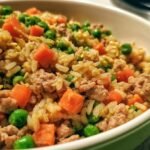
6-Ingredient Nutritious Puppy Meals That Boost Energy & Shine
- Total Time: 30 minutes
- Yield: 4 cups 1x
- Diet: Gluten Free
Description
This simple recipe provides balanced nutrition for growing puppies, using wholesome ingredients to support their energy and development.
Ingredients
- 1 cup ground turkey (lean)
- 1/2 cup brown rice
- 1/4 cup carrots (finely chopped)
- 1/4 cup peas
- 1 tbsp olive oil
- 1 tsp calcium carbonate (optional)
Instructions
- Cook ground turkey in a pan until fully browned.
- Boil brown rice in water for 15-20 minutes until tender.
- Steam carrots and peas until soft.
- Mix all ingredients in a bowl and let cool.
- Portion into servings based on your puppy’s weight.
Notes
- Consult your vet before changing your puppy’s diet.
- Adjust portion sizes as your puppy grows.
- Store leftovers in the fridge for up to 3 days.
- Prep Time: 10 minutes
- Cook Time: 20 minutes
- Category: Pet Food
- Method: Stovetop
- Cuisine: Pet
Nutrition
- Serving Size: 1/2 cup
- Calories: 150
- Sugar: 1g
- Sodium: 45mg
- Fat: 6g
- Saturated Fat: 1g
- Unsaturated Fat: 4g
- Trans Fat: 0g
- Carbohydrates: 12g
- Fiber: 2g
- Protein: 10g
- Cholesterol: 30mg

